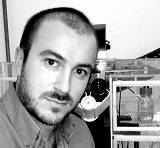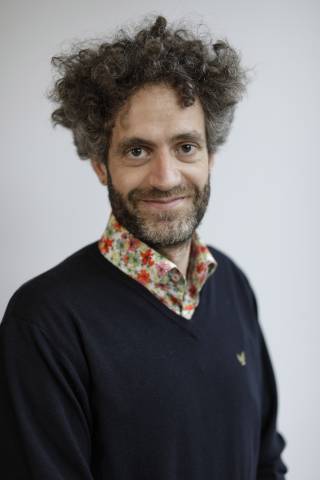One important way to help fulfil the Crick's Discovery Without Boundaries strategy is to bring together researchers from the Crick laboratory and its partners to undertake new interdisciplinary collaborations.
To help achieve this, university staff from 32 research groups have already been selected through two recruitment rounds and are moving into the Crick as secondments, satellite groups or sabbaticals. These arrangements are known as attachments to reflect their highly flexible nature.
Considerations |
|---|
Applications will be assessed on the quality of the proposed research and its multi-disciplinary nature, especially in the physical, mathematical and computational sciences, and in clinical translation.
Consistent with the Crick's aim to create future science leaders, applications involving early career researchers are particularly encouraged.
It is expected that projects will be externally funded. Applications where funding is not yet in place can be considered but selection will be contingent upon a successful grant application.
Current Attachments
Secondments
- Dr Paola Bonfanti

Group size: 7
Start date: January 2017
Duration: 6 years
Research to be undertaken at the Crick:
The main goal of our research is to understand and manipulate the function of human thymus, which is the primary lymphoid organ essential for the establishment of immune T cell competence and induction of self-tolerance.
Our work brings a multidisciplinary approach by combining epithelial cell biology, novel tissue engineering technologies, and molecular analysis of T cell development. The outcome of this work will set the basis for novel clinical protocols for organ transplantation and immunodeficiency disorders.
Because of a broader interest in epithelial stem cell biology our group is also studying self-renewal and differentiation potency of human epithelial oesophageal cells with the aim of providing a functional and growing epithelium for a tissue engineering approach for neonatal atresia.
Finally, we are studying human pancreas development and building in vitro model systems to dissect fate and potency of pancreatic progenitors.
- Professor Sonia Gandhi

Group size: 7
Start date: September 2017
Duration: 6 years
Research to be undertaken at the Crick:
The Gandhi laboratory for Neurodegeneration Biology is based at the Francis Crick Institute. Parkinson’s disease is a common devastating neurodegenerative disorder, that remains incurable due to our lack of understanding about its cause. Our research group studies the pathways that lead to the neuronal death in the human brain, so that we can finally understand when and how to intervene in this process.
Powerful genetic clues highlight protein aggregation, mitochondrial homeostasis, and inflammation to be causal in Parkinson’s disease. Harnessing the power of induced pluripotent stem cell technology to model human disease, we generate region specific human neurons and astrocytes to investigate these mechanisms. Our research focuses on how and why protein misfolding occurs in neurons, how impaired mitochondria leads to the development of disease and whether, and how, these processes are interdependent. In addition, we investigate the role of glia, and how interactions between neurons and glia may drive progression of neurodegeneration.
Research in our group is highly collaborative and cross-disciplinary, integrating (i) single molecule and super resolution biophysical tools to complex human systems to resolve aggregation at nanoscale, (ii) single cell imaging of human induced pluripotent stem cells (iii) computational modelling and bioinformatic approaches to imaging, and transcriptomic and proteomic data in brain and cells.
Translation of scientific discovery to patient benefit is integral to our research vision. Our aim is that reverse translation from patient cells to disease mechanism, and forward translation from disease mechanism to drug discovery will ultimately lead to improved care.
Eukaryotic cells possess myriad strategies to mitigate diverse stressful stimuli. Upon stress, ribonucleoprotein (RNP) granules assemble into stress granules due to prion-like polymerization of RNA binding proteins (RBPs) together with RNAs.- Professor Rickie Patani

Group size: 10
Start date: September 2017
Duration: 6 years
Research to be undertaken at the Crick:
We study diseases of the nervous system, focusing on motor neuron disease (ALS) and dementia. In ALS, patients lose the ability to move, eat, speak and ultimately breathe. ALS is untreatable because we do not understand the underlying cause(s) of disease. In order to understand disease mechanisms, we use human stem cells generated from real patients. With over a decade of experience using this technology, we can now transform stem cells from patients into human nerve cells and, separately, their support cells (called glia). This approach allows us to determine the sequence of disease-related events within particular cell types. Our overarching goal is to identify precisely what goes wrong, when this begins and in which cell type. We specifically focus on how the following three factors contribute to nerve cell death in ALS:
- Messages called RNAs, which are made from our DNA blueprint
- Astrocytes, which are star-shaped cells that normally support nerve cells
- Ageing, which is the biggest risk factor for many neurodegenerative diseases including ALS
The more we understand about human neurological diseases using this approach, the more we will be able to therapeutically target underlying disease mechanisms. We ultimately wish to use this new information to benefit patients with untreatable neurological diseases.
- Professor Saverio Tedesco

Group size: 6
Start date: January 2020
Duration: 6 years
Research to be undertaken at the Crick:
We are interested in understanding how skeletal muscle stem cells sustain tissue regeneration and how this process could be improved to develop therapies for incurable neuromuscular diseases such as muscular dystrophies.
We pioneered the use of human artificial chromosomes and induced pluripotent stem (iPS) cells for muscle gene and cell therapy, as well as human iPS cell-based platforms for complex neuromuscular disease modelling and tissue engineering. More recently, we have identified signalling pathways governing muscle cell fate plasticity and migration. Our overall goal is the clinical translation of these novel regenerative strategies into therapies for severe muscle diseases.
Our research programme at the Crick will focus on: 1) elucidating the cellular and molecular mechanisms underpinning muscle diseases; 2) generating high-fidelity in vitro models of neuromuscular diseases; 3) developing next-generation therapeutics for neuromuscular disorders. We are also teaming up with other Crick labs with common interests and complementary expertise to setup an innovative hub to develop human neuromuscular models.
- Professor Mariya Moosajee

Group size: 5
Start date: January 2020
Duration: 6 years
Research to be undertaken at the Crick
Our research is focused on dissecting the molecular basis of genetic eye disease using multi-omic approaches such as whole genome sequencing, RNA-Seq, methylomics and metabolomics. In addition to undertaking detailed clinical studies to understand the natural history of these conditions in patients, in the lab we generate zebrafish disease models using CRISPR/Cas9 gene editing and human induced pluripotent stem cell derived retinal cells to further advance our knowledge of disease mechanisms. This permits the identification of potential therapeutic targets for development of treatment strategies and trial outcome measures for a wide range of inherited eye disorders.
At the Crick, we will be developing non-viral gene therapy, an alternative to conventional adeno-associated virus (AAV) delivery systems. Non-viral gene therapy has several advantages in that it can accommodate large genes of any size, it lacks viral components and therefore has less chance of evoking an immune response, and it remains episomal, thus reducing the risk of insertional mutagenesis. Together with Crick group leaders, we will use scaffold/matrix attachment region DNA vectors to optimise delivery into photoreceptors and retinal pigment epithelium, whilst exploring the innate intracellular immune response to the introduction of this foreign DNA to assess the safety and efficacy of this approach.
- Professor Veronica Kinsler

Group size: 8
Start date: December 2019
Duration: 6 years
Research to be undertaken at the Crick
Somatic mosaicism is the result of single cell pathogenic variants and subsequent developmental expansion of the clone in the embryo and fetus. Solving the causes of these diseases has only really been possible over the last decade due to improvements in sequencing, and to better understanding of the patterns of mosaic disease. The variants are frequently in key oncogenes, and the individuals only survive the dramatic developmental effects by being mosaic. All our work is therefore not only applicable to childhood disease, but also to common cancers in the general population, from understanding the pathogenesis, to targeting treatments.
Our work at the Crick will exploit the knowledge we have gleaned in recent years to address three fundamental challenges:
1) To understand the biology of why certain somatic variants occur more commonly in certain individuals;
2) To analyse and model embryological patterns of cell development which have persisted due to the variants;
3) To continue to develop highly targeted therapies for mosaic disorders.Collaboration with key Crick group leaders Dr Julian Downward (Oncology Signaling Laboratory) and Dr Simon Boulton (DSB Repair Metabolism Laboratory) will bring expertise from different perspectives, leading ultimately to more profound biological insight, and to much needed translational advance.
- Professor Pietro Fratta
Group Size: 3
Start Date: January 2023
Duration: 6 years
Research to be undertaken at the Crick:
Our laboratory studies how alterations in RNA processing and localisation impact neuronal health and function, and how these mechanisms contribute to motor neuron diseases.
Our research at the Crick centres around the RNA binding protein TDP-43, the mislocalisation of which is the pathological hallmark of conditions such as amyotrophic lateral sclerosis (ALS), frontotemporal dementia (FTD) and inclusion body myositis (IBM).
When TDP-43 is lost from cell nuclei, numerous intronic sequences are de-repressed and included in mature RNAs – these events are described as cryptic exons (CE). Most CEs induce RNA degradation, whilst a minority encode additional peptide sequences that are incorporated in mature proteins.
We have shown that TDP-43 CEs are only found in affected brain regions, and we have now produced evidence that CEs play an active role in ALS progression. Nonetheless, numerous aspects of CE biology and function remain unknown.
Our work at the Crick aims to uncover the biological function and translational potential of cryptic exons (CEs), and specifically:
- Uncover the mechanism underlying TDP-43 CE repression
- Investigate the role of TDP-43 cryptic exons in axonal damage and regeneration
- Exploit the specificity of CEs to develop a molecular biomarker for TDP-43 proteinopathies
- Develop targeted therapeutics for CE splicing in ALS.
Professor Fratta's UCL Profile
- Dr Giulia Zanetti

Group Size: 3
Start Date: June 2023
Duration: 6 years
Research to be undertaken at the Crick:
Eukaryotic cells are organised in membrane-bound compartments that constantly and actively exchange material. Coat complexes promote transport of proteins between compartments by generating cargo-loaded membrane vesicles. Tight regulation of traffic ensures that each class of protein is delivered to the right place at the right time, so that cells can function smoothly and communicate with each other.
The first step in trafficking, cargo exit from the endoplasmic reticulum (ER), is mediated by the COPII coat.How coat assembly can deliver the flexibility necessary to accommodate a wide variety of cargo proteins, and how the process can be regulated, are outstanding questions which our lab is aiming to answer.
We use a combination of biochemistry, cell and structural biology to understand how COPII function is regulated, for example to promote secretion of large extracellular matrix components such as procollagens.
At the Crick, we will aim to dissect the architecture of the COPII coat in situ using the latest advances in cryo-imaging, from cryo-FIB/SEM, cryo-CLEM and cryo-tomography.
Satellites
- Professor Marco Endrizzi

Group size: 3
Start date: September 2023
Duration: 3 years
Research to be undertaken at the Crick:
The research programme envisaged for this Attachment at the Crick is focussed on the embodiment of advanced X-ray imaging concepts, aimed at multimodal imaging of soft tissues across multiple length scales. By merging the complementary contrast available with phase-based imaging techniques, we aim at transforming X-ray micro-computed tomography into a bridging imaging technique, to enable the linking of morphological and functional imaging capabilities of light and electron microscopy, across vastly different length scales.
X-ray imaging is invaluable in its ability to visualise the internal structure of opaque samples non-destructively. Phase-contrast methods have the capability of visualising details that are otherwise undetectable with the conventional, attenuation-based approaches. Relying on radiation scattering instead of absorption carries the potential to remove heavy metal staining form the preparation protocols. This can pave the way towards the imaging of structures and microorganisms in pristine conditions, as close as possible to their native states. This Attachment would be a unique opportunity for bringing in close contact specialised expertise in advanced X-ray imaging techniques with pioneering researchers that make use multiscale imaging on extremely challenging samples.
The program is envisaged as centred around the Wellcome Trust Technology Development grant “A multi-contrast X-ray nanoscope for multidisciplinary research” which I secured in 2020. That grant is developing the underpinning technology necessary to be able to nondestructively navigate a sample across length scales. Its key advancements will be ultrahigh-resolution zoom-ins on intact samples, whose entire structure is measured at a lower resolution, combined with multi-contrast modes arising from phase effects. A simple analogy of this new X-ray tomography paradigm is the way we navigate digital maps. We use coarse resolution at large scales, blowing-up in precise locations of interest. Both capabilities must be concurrently present: it would not be useful to navigate large areas at highest resolution (lost in space) and having only coarse resolution would lack invaluable insights.
This research will be in synergy with the NXCT (nxct.ac.uk), the EPSRC funded National Research Facility for X-ray Tomography, where UCL is developing X-ray phase-based imaging capacity and capabilities. I envisage the NXCT to be the platform that will make these new imaging techniques available to industry and to the research community.
The three-year program is structured as follow. Close interaction with the Electron Microscopy laboratory will enable the identification of a suite of challenging samples. A preliminary investigation will follow, using standard protocols for sample preparation (as in standard EM), This will set the ground truth, subsequent developments will be evaluated against it. Pilot dataset will underpin modelling the image formation process, enabling insilico engineering of the new sample preparation protocols. These will include non-stained, cryo and new contrast agents (e.g., micro- and nano-structured particulates). Iterations between data acquisition with the new protocols and the fine-tuning of retrieval/reconstruction algorithms will deliver pilot multiscale imaging of a selection of models identified by the collaborators.
The Crick is a unique place for hosting these developments and would be the perfect environment where to make these novel approaches available to world-leading early adopters.
 Close
Close


